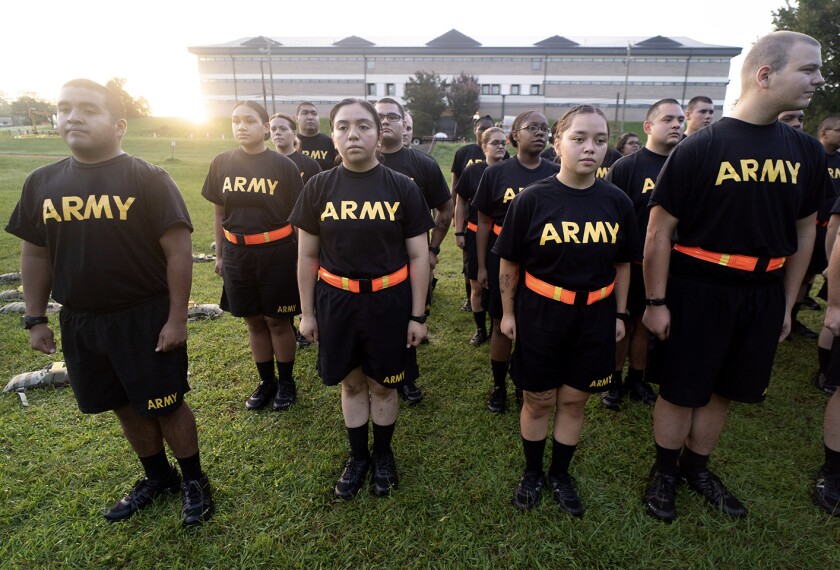Only about 1 in 5 U.S. high school students students graduated prepared to take college classes in English, reading, math, and science in 2022, according to new data from the college testing firm ACT.
Average performance on the composite ACT fell for the fifth year in a row, to 19.8 out of 36 points in the class of 2022—the lowest performance since 1991.
Across all racial and ethnic groups, only Asian students improved in average scores, from 24.5 points in 2018 to 24.7 in 2022. Black students’ composite scores fell from 16.8 to 16.1 points; Hispanic students from 18.8 to 17.7 points; and white students from 22.2 to 21.3 points during that time.
“The magnitude of the declines this year is particularly alarming, as we see rapidly growing numbers of seniors leaving high school without meeting the college-readiness benchmark in any of the subjects we measure,” said ACT CEO Janet Godwin in a statement. “These declines are not simply a byproduct of the pandemic. They are further evidence of longtime systemic failures that were exacerbated by the pandemic.”
As bad as the scores are, they may undersell new graduates’ academic instability. Of the nearly 1.35 million graduates who took the ACT in 2022, 35 percent did so multiple times, up from 32 percent of the class of 2021 who retested. A prior study of test participation found students who retake the ACT raise their score nearly 3 points on average compared to students who do not retest—and low-income students are much less likely to take the test several times than higher-income students. It costs $88 per student to take the full ACT (or $63 without a related writing assessment), though some districts and states pay for students to take the test in school. While some students can apply for a need-based fee waiver, prior studies have found the majority of students with family incomes under $60,000 a year don’t use them.
ACT’s score trends also align with those of the College Board’s SAT, which also showed declines for the class of 2022 compared to 2021. (The SAT cautioned against comparing current to pre-pandemic scores, because of differences in participation.) The College Board found only 43 percent of SAT test-takers met its college-readiness benchmarks for reading, writing, and math.
Severe college-readiness gaps for disadvantaged students
ACT sets benchmark scores in core subject areas based on the performance of college students who previously took the ACT. For example, a student who meets the benchmark score of 18 out of 36 in English composition or 22 out of 36 in math would have about a 75 percent chance of earning at least a C—and a 50-50 chance of earning a B or higher—in introductory college courses in English composition or algebra, respectively.
ACT found 53 percent of all graduates met college-readiness benchmarks in English, but only 41 percent did so in reading. Well under a third of students met benchmarks in general science and math. Moreover, only 16 percent of all students—including only 8 percent of Latino students and less than 5 percent of Black and Native American students—were prepared to earn at least a C in more-intensive calculus, physics, and other college courses for majors in STEM fields.
Most students take college placement tests in the winter or spring of their junior year, and the recent declines are likely to increase pressure on schools to catch up struggling high school students. It will be a steep climb.
“I think it also speaks to the need for earlier opportunities for assessment, for instructional improvement, and for conversation,” said Rose Babington, ACT’s senior director for state partnerships. “If a student isn’t where they want to be as they’re starting to head into senior year and applying to colleges and universities, it’s better for students to understand their support needs, what they can challenge themselves with during their senior year to close that gap as much as they possibly can.”
Grade inflation and limited access to rigorous courses also may be playing a role in weakening students’ preparation for college.
ACT found that students who took a “core” college-prep course load in high school performed better on the college placement test than students who took less rigorous courses—but, that course advantage is weaker than it was five years ago.
“Our research has told us for many years that access to a rigorous high school curriculum is the most important thing for student success—and that limited access, we think is very much tied to the score declines that we’ve seen this year and for the past five to 10 years before that,” said Babington. “And grade inflation, we have seen that worsening over the last decade and in particular over the last three years. Pairing ACT with high school academic data, we think gives a really telling picture for schools and districts and states to look at student readiness and to be able to really identify some gaps.”
Separate studies released this spring by ACT and the National Center for Education Statistics also found rampant and rising grade inflation in high school classes both before and during the pandemic. Grade inflation increased faster for girls than boys, and faster for Black students than those of other races, ACT reported.






